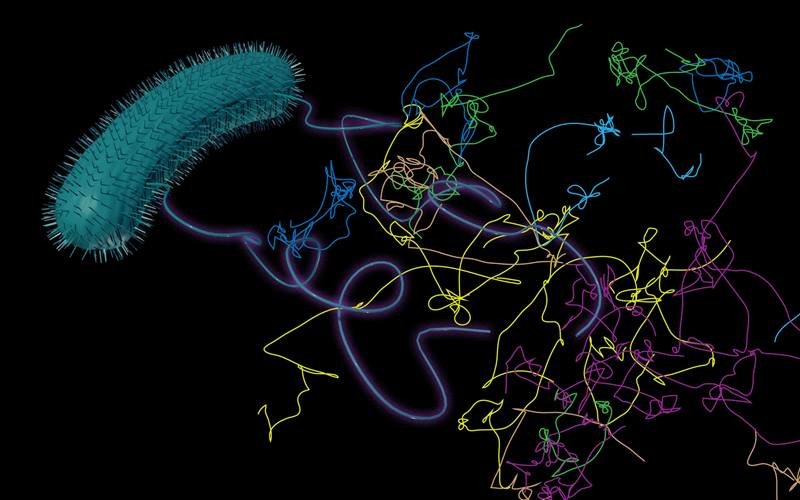The Science
Bacteria in groundwater move in surprising ways. They can passively ride flowing groundwater. They can also actively move on their own in what scientists call “run and tumble” behavior. However, most mathematical models that describe how groundwater transports bacteria stumble when it comes to calculating how bacteria move. To improve these models, scientists studied two kinds of microorganisms’ movements. They then factored those characteristics into a simple micro-scale transport model that more accurately predicted changes underground.
The Impact
Reactive transport models describe how fluids move through the Earth’s crust as well as the chemical reactions that happen as a result. Current reactive transport models either do not account for bacterial movement or only simulate how bacteria move passively in groundwater. This approach can lead to a poor understanding of how bacteria influence nutrient cycling and the way that contaminants move in groundwater. This study can help scientists develop more accurate mathematical models of bacterial transport. This will help them better understand the role of bacteria in hydro-biogeochemical processes. It can also help engineers design better ways to manage plumes of contaminants.
Summary
Scientists partnered to study how two different types of microorganisms moved in flowing groundwater. Both types of microorganisms had been used in contaminant transport studies, one at the Hanford Site in southeastern Washington State and one at the U.S. Department of Energy field research site in Rifle, Colorado. The scientists studied trajectories of individual cells over several seconds to a few minutes. Using the super resolution fluorescence microscope at the Environmental Molecular Sciences Laboratory (a DOE Office of Science user facility), they noted a distinct run (movement in one direction) followed by a tumble (a sudden, random change in direction). By calculating the length and timing of these movements, they could develop a simple Continuous Time Random Walk (CTRW) model to predict how the bacteria would move. When compared to current models for bacterial remediation, the CTRW model was better at predicting bacterial transport in many circumstances. The CTRW model is the first step in developing and testing new reactive transport models that incorporate bacterial transport behavior.
Funding
This work was supported by the Desert Research Institute’s Maki Endowment and the U.S. Department of Energy’s (DOE) Office of Science (through its Offices of Basic Energy Sciences and Biological and Environmental Research). The Environmental Molecular Sciences Laboratory is a DOE Office of Science user facility.
